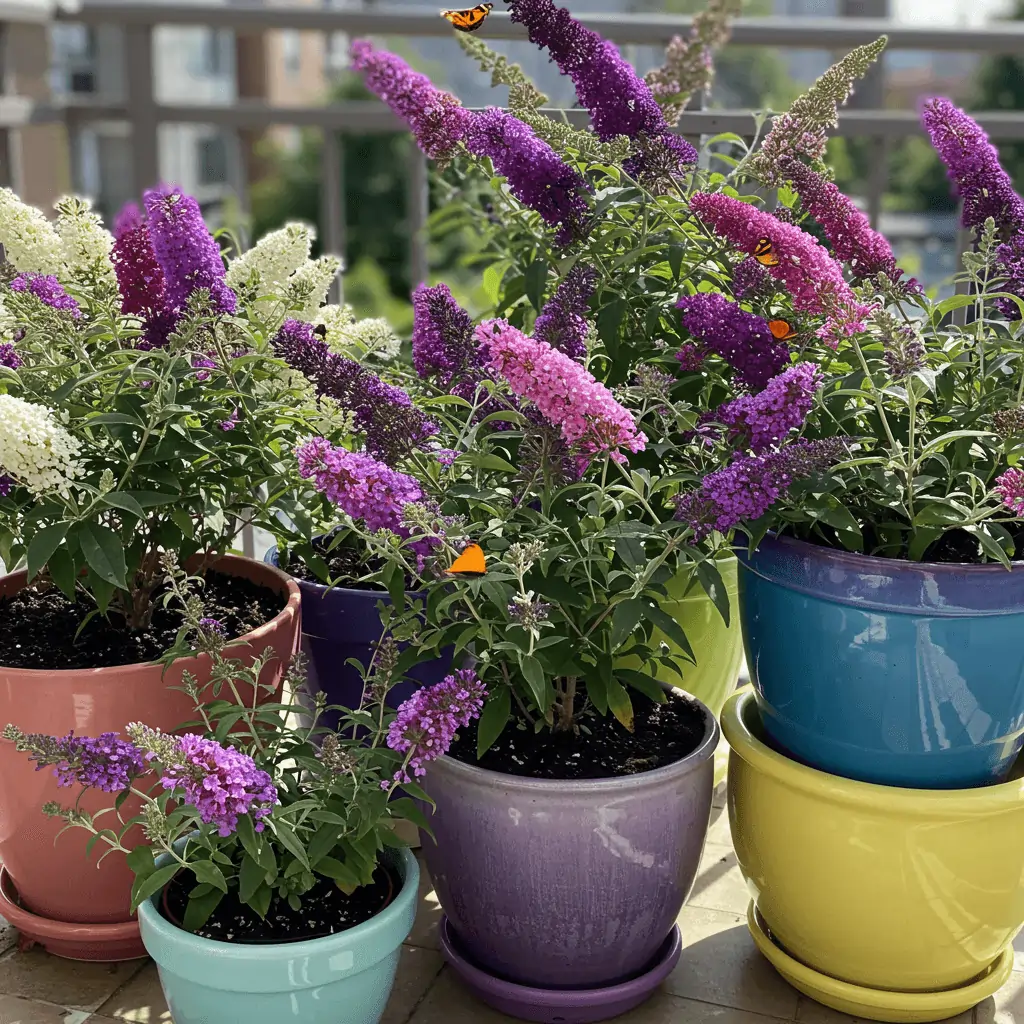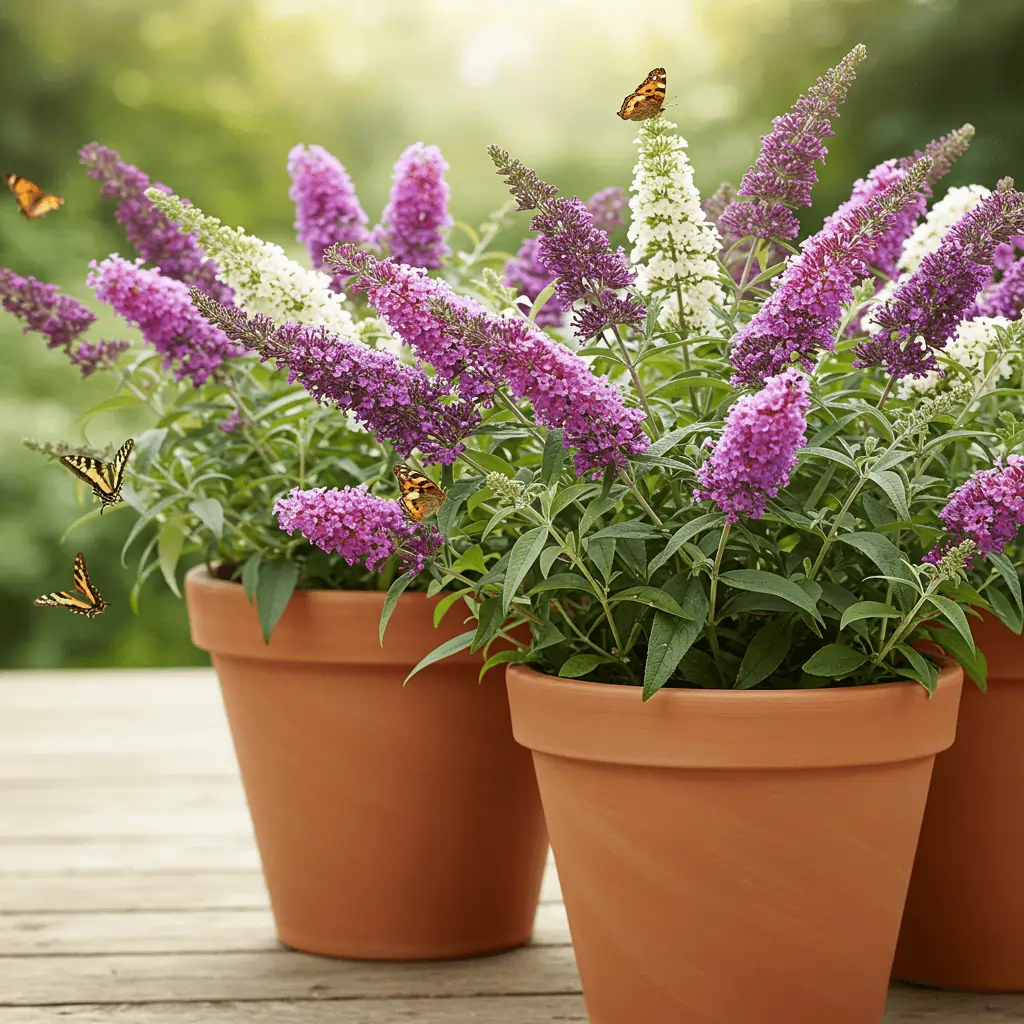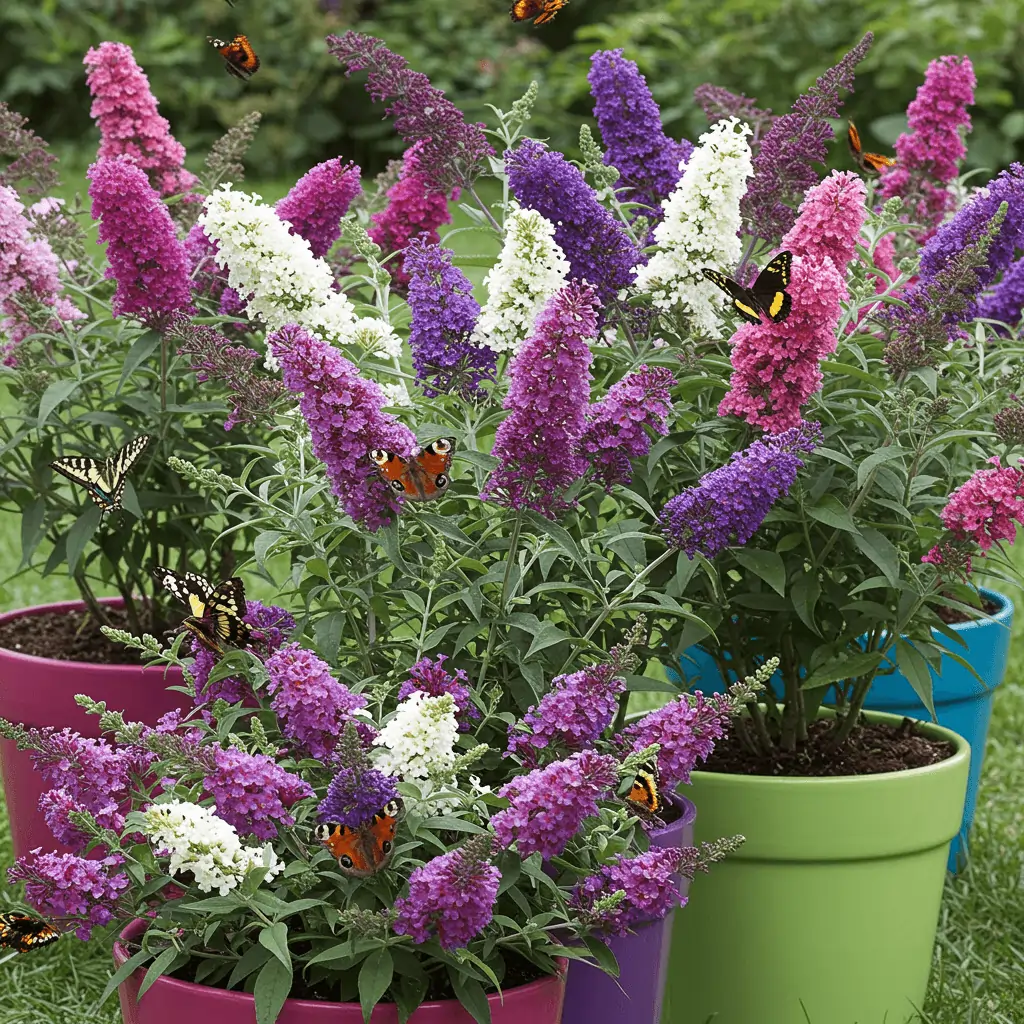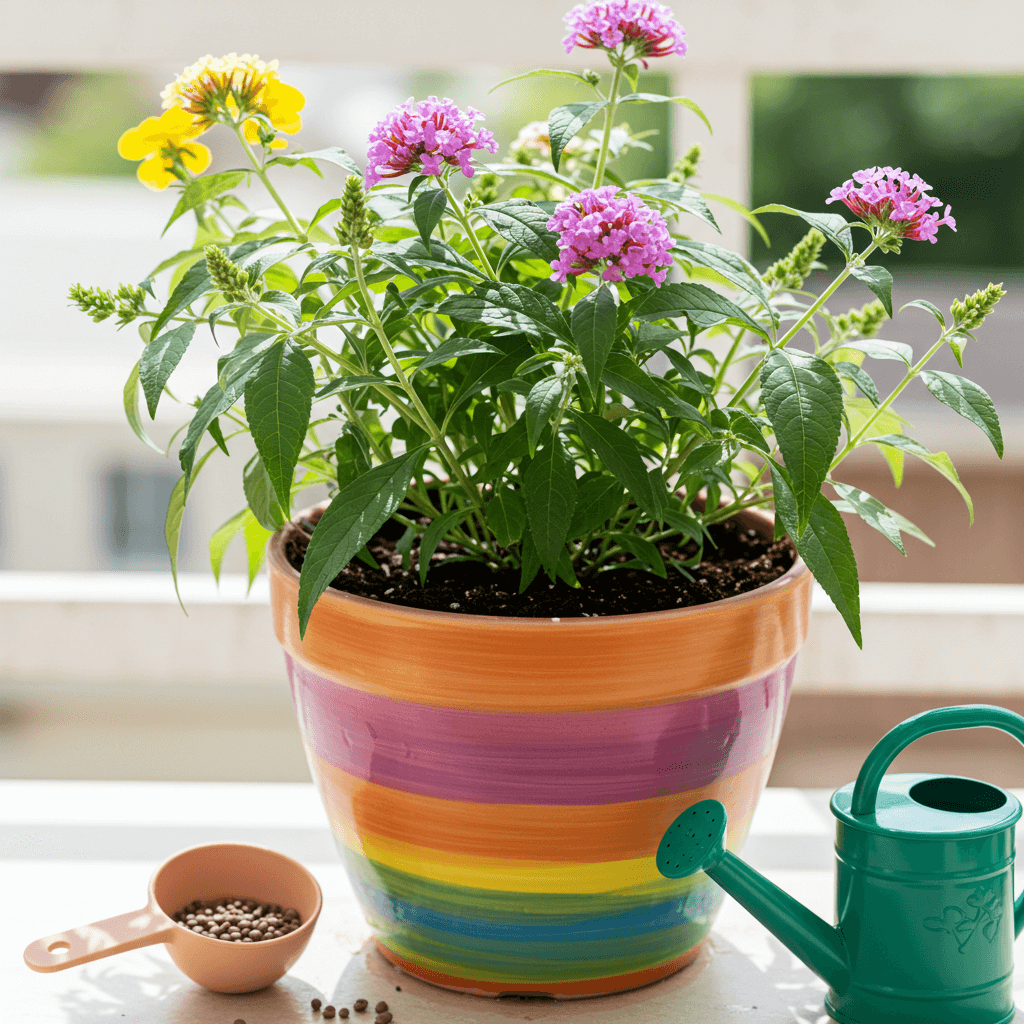Butterfly Plants are a stunning addition to any garden, especially when grown in pots. Their vibrant blooms and ability to attract butterflies make them a favorite among gardeners. Whether you’re a beginner or an experienced plant enthusiast, this guide will walk you through everything you need to know about Butterfly Plant care in pots, from planting to maintenance and troubleshooting common issues.
Introduction to Butterfly Plants
What is a Butterfly Plant?
Butterfly Plants, often referred to as Asclepias (Milkweed) or Buddleja (Butterfly Bush), are flowering plants known for their ability to attract butterflies. These plants produce nectar-rich blooms that serve as a food source for butterflies, making them a must-have for any butterfly garden. Their unique flowers, which often resemble butterfly wings, add a touch of magic to your outdoor or indoor space.
Benefits of Growing Butterfly Plants in Pots
Growing Butterfly Plants in pots offers several advantages:
- Space-Saving: Perfect for balconies, patios, or small gardens.
- Portability: Easily move the pots to optimize sunlight or protect plants from harsh weather.
- Control Over Soil and Drainage: Pots allow you to create the ideal growing environment for your plants.
Popular Butterfly Plant Varieties for Container Gardening
Some popular Butterfly Plant varieties that thrive in pots include:
- Butterfly Bush (Buddleja davidii): Known for its long, cone-shaped flowers.
- Milkweed (Asclepias): Essential for Monarch butterflies.
- Lantana: A colorful option that attracts a variety of pollinators.
How to Plant Butterfly Plants in Pots
Choosing the Right Pot for Butterfly Plant Care in Pots
Selecting the right pot is crucial for the health of your Butterfly Plant. Look for:
- Drainage Holes: Ensure the pot has adequate drainage to prevent waterlogging.
- Size: Choose a pot that’s at least 12-16 inches in diameter to accommodate root growth.
- Material: Clay or ceramic pots are ideal as they provide better airflow to the roots.
Best Soil for Butterfly Plants in Pots
Butterfly Plants thrive in well-draining soil with a slightly acidic to neutral pH (6.0-7.0). Use a high-quality potting mix enriched with organic matter like compost or peat moss. Avoid heavy soils that retain too much moisture, as this can lead to root rot.
Step-by-Step Planting Guide for Butterfly Plant Care in Pots
- Fill the pot with the prepared soil mix, leaving about 2 inches from the top.
- Gently remove the Butterfly Plant from its nursery container and loosen the roots.
- Place the plant in the center of the pot and fill in with soil, pressing lightly to remove air pockets.
- Water thoroughly after planting to help the soil settle.
Ideal Location for Potted Butterfly Plants
Butterfly Plants need plenty of sunlight to thrive. Place your pots in a location that receives:
- Full Sun: At least 6-8 hours of direct sunlight daily.
- Partial Shade: If you live in a hot climate, provide some afternoon shade to prevent scorching.
Read More :
Butterfly Plant Care Tips for Healthy Growth
Watering Butterfly Plants in Pots
Proper watering is key to keeping your Butterfly Plants healthy:
- Frequency: Water when the top 1-2 inches of soil feel dry. Avoid overwatering, as this can lead to root rot.
- Signs of Overwatering: Yellowing leaves, wilting, or moldy soil.
- Signs of Underwatering: Dry, crispy leaves, and slow growth.
Fertilizing Butterfly Plants
Butterfly Plants benefit from regular feeding during the growing season:
- Type of Fertilizer: Use a balanced, slow-release fertilizer or organic options like compost tea.
- Frequency: Fertilize every 4-6 weeks during spring and summer. Avoid fertilizing in winter when the plant is dormant.
Pruning and Deadheading
Pruning helps maintain the shape of your Butterfly Plant and encourages new growth:
- When to Prune: In early spring, before new growth begins.
- How to Prune: Remove dead or damaged branches and trim back overgrown areas.
- Deadheading: Remove spent flowers to promote continuous blooming.
Managing Pests and Diseases
Common pests that affect Butterfly Plants include aphids, spider mites, and whiteflies. To manage these:
- Natural Remedies: Use neem oil or insecticidal soap.
- Prevention: Keep the plant healthy and avoid overwatering to deter pests.
Seasonal Care for Potted Butterfly Plants
Spring and Summer Care
- Encourage Blooming: Fertilize regularly and ensure the plant receives adequate sunlight.
- Watering: Increase watering frequency during hot weather.
Fall and Winter Care
- Prepare for Dormancy: Reduce watering and stop fertilizing as the plant enters dormancy.
- Protect from Frost: Move pots indoors or cover them with frost cloth if temperatures drop below freezing.
Repotting Butterfly Plants
Repot your Butterfly Plant every 2-3 years to refresh the soil and provide more space for root growth:
- When to Repot: In early spring before new growth begins.
- How to Repot: Gently remove the plant from its current pot, trim any dead roots, and place it in a larger pot with fresh soil.
Common Problems and Solutions for Butterfly Plants in Pots
Yellowing Leaves
- Causes: Overwatering, nutrient deficiency, or poor drainage.
- Solution: Adjust watering habits, fertilize, and ensure proper drainage.
Lack of Blooms
- Causes: Insufficient sunlight, improper pruning, or lack of nutrients.
- Solution: Move the plant to a sunnier spot, prune correctly, and fertilize regularly.
Root Rot and Drainage Issues
- Causes: Overwatering or poor drainage.
- Solution: Repot the plant in fresh, well-draining soil and reduce watering.
Attracting Butterflies to Your Potted Plants
- Tips: Plant nectar-rich flowers nearby, avoid using pesticides, and provide a water source like a shallow dish with stones.
For more detailed tips on caring for your Butterfly plant care in pots check out this comprehensive guide
Conclusion
Caring for Butterfly Plants in pots is a rewarding experience that brings beauty and life to your garden. By following these tips on planting, watering, fertilizing, and troubleshooting, you can ensure your Butterfly Plants thrive and attract butterflies throughout the year. Start your container garden today and enjoy the vibrant blooms and fluttering visitors!
FAQs About Butterfly Plant Care in Pots
1. Can Butterfly Plants grow well in pots?
Yes, Butterfly Plants can thrive in pots as long as they are provided with the right conditions. Choose a pot with good drainage, use well-draining soil, and ensure the plant receives adequate sunlight. Butterfly Plant care in pots is perfect for small spaces like balconies, patios, or indoor gardens.
2. What is the best pot size for Butterfly Plants?
A pot that is 12-16 inches in diameter is ideal for most Butterfly Plants. This size provides enough space for root growth and stability for the plant. Ensure the pot has drainage holes to prevent waterlogging.
3. How often should I water my potted Butterfly Plant?
Water your Butterfly Plant when the top 1-2 inches of soil feel dry. Overwatering can lead to root rot, so it’s important to let the soil dry out slightly between waterings. During hot weather, you may need to water more frequently.
4. What type of soil is best for Butterfly Plants in pots?
Butterfly Plants prefer well-draining soil with a slightly acidic to neutral pH (6.0-7.0). Use a high-quality potting mix enriched with organic matter like compost or peat moss. Avoid heavy soils that retain too much moisture.
5. How much sunlight do Butterfly Plants need?
Butterfly Plants thrive in full sun, which means they need at least 6-8 hours of direct sunlight daily. If you live in a hot climate, provide some afternoon shade to prevent the leaves from scorching
6. Do Butterfly Plants need fertilizer?
Yes, Butterfly Plants benefit from regular fertilization during the growing season (spring and summer). Use a balanced, slow-release fertilizer or organic options like compost tea. Fertilize every 4-6 weeks and avoid fertilizing in winter when the plant is dormant.
7. How do I prune a Butterfly Plant in a pot?
Prune your Butterfly Plant in early spring before new growth begins. Remove dead or damaged branches and trim back overgrown areas to maintain the plant’s shape. Deadheading (removing spent flowers) also encourages continuous blooming.
8. Why are the leaves on my Butterfly Plant turning yellow?
Yellowing leaves can be caused by overwatering, nutrient deficiency, or poor drainage. Adjust your watering habits, ensure the pot has proper drainage, and fertilize the plant if necessary.
9. How do I attract butterflies to my potted Butterfly Plant?
To attract butterflies:
- Plant nectar-rich flowers nearby.
- Avoid using pesticides that can harm pollinators.
- Provide a water source, such as a shallow dish with stones for butterflies to land on.
10. Can I grow Butterfly Plants indoors?
Yes, you can grow Butterfly Plants indoors as long as they receive adequate sunlight. Place the pot near a south-facing window or use grow lights to supplement natural light. Ensure proper ventilation and avoid overwatering.
11. How do I protect my potted Butterfly Plant in winter?
If you live in a cold climate, protect your Butterfly Plant by:
- Moving the pot indoors to a cool, bright location.
- Covering the plant with frost cloth if left outside.
- Reducing watering and stopping fertilization during dormancy.
12. How often should I repot my Butterfly Plant?
Repot your Butterfly Plant every 2-3 years to refresh the soil and provide more space for root growth. The best time to repot is in early spring before new growth begins.
13. What are common pests that affect Butterfly Plants?
Common pests include aphids, spider mites, and whiteflies. Use natural remedies like neem oil or insecticidal soap to manage these pests. Keeping the plant healthy and avoiding overwatering can also help prevent infestations.
14. Why isn’t my Butterfly Plant blooming?
A lack of blooms can be due to insufficient sunlight, improper pruning, or lack of nutrients. Ensure your plant receives enough sunlight, prune it correctly, and fertilize regularly to encourage flowering.
15. Can I grow different Butterfly Plant varieties together in one pot?
Yes, you can grow different Butterfly Plant varieties together in a large pot, as long as they have similar care requirements. Ensure the pot is spacious enough to accommodate the roots of all plants and provide adequate sunlight and water.

